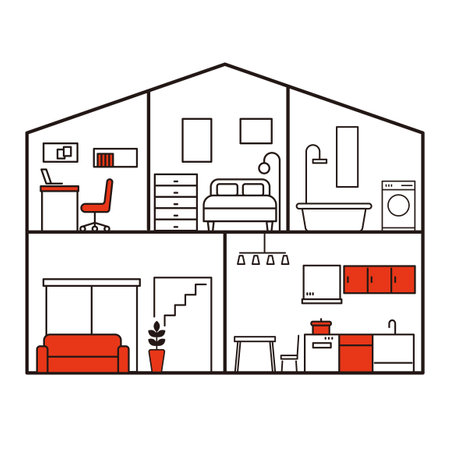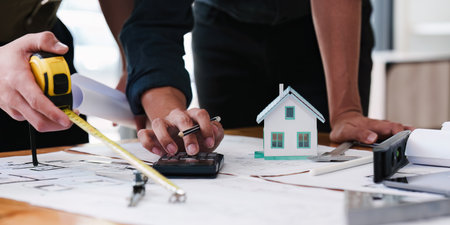1. Initial Investment Beyond the Purchase Price
When buying a rental property, most people focus on the listing price or the amount theyll pay for the home itself. However, owning a rental property in the U.S. involves several additional upfront costs that are easy to overlook but crucial for your investment planning. Let’s break down these initial expenses so you know exactly what to expect before you hand over your first set of keys.
Inspection Fees
Before you close on a property, a thorough inspection is a must. Home inspections help uncover hidden issues like plumbing leaks, electrical problems, or foundation cracks. These inspections can range from $300 to $600 depending on location and property size, but skipping this step can lead to expensive surprises down the road.
Closing Costs
Closing costs cover various fees required to finalize the purchase of your rental property. These often include:
- Lender fees
- Title insurance
- Appraisal fees
- Attorney fees (depending on your state)
- Recording fees and transfer taxes
On average, closing costs are about 2%–5% of the purchase price. Here’s a quick overview:
| Expense Type | Typical Cost Range |
|---|---|
| Inspection Fees | $300–$600 |
| Appraisal Fee | $400–$700 |
| Title Insurance & Other Closing Costs | 2%–5% of purchase price |
| Attorney Fees (if required) | $500–$1,500+ |
Initial Repairs and Upgrades
A house rarely comes ready for tenants straight out of escrow. Most properties need at least some basic repairs—think fresh paint, updated locks, or fixing broken fixtures—to become rent-ready. In some cases, you may want to invest in upgrades like new appliances, better flooring, or energy-efficient lighting to attract quality tenants and boost your rental income potential.
Common Rent-Ready Repairs and Upgrades Include:
- Patching walls and repainting rooms
- Replacing old carpets or flooring
- Updating kitchen appliances or bathroom fixtures
- Landscaping for curb appeal
- Ensuring all safety systems (smoke detectors, carbon monoxide alarms) are up to code
The cost for these repairs can vary widely—from a few hundred dollars for minor fixes to several thousand if major updates are needed. It’s smart to budget an extra 1%–3% of the home’s value for these initial improvements.
Ongoing Maintenance and Repairs
What Maintenance Really Looks Like for American Landlords
Owning a rental property in the United States means more than just collecting rent every month. A big part of your responsibility is keeping the property in good shape, both for your tenants’ comfort and to protect your investment. Here’s what you can expect when it comes to ongoing maintenance and repairs.
Routine Maintenance Tasks
Some tasks come up every year, no matter who your tenants are or how new your property is. These jobs keep everything running smoothly and help you avoid bigger, costlier problems down the road. Here are some of the most common:
| Task | How Often? | Average Cost (per year) |
|---|---|---|
| HVAC Servicing (Heating & Cooling Systems) | Annually | $150 – $400 |
| Lawn Care / Landscaping | Monthly/Seasonally | $500 – $1,200 |
| Pest Control | Quarterly/Annually | $100 – $300 |
| Gutter Cleaning | Twice a year | $150 – $350 |
| Smoke/CO Detector Checks & Replacements | Annually or as needed | $50 – $150 |
| Painting Touch-Ups / Wall Repairs | As needed | $200 – $800 |
The Surprise Factor: Emergency Repairs
No matter how well you maintain your property, emergencies can and do happen. Common emergency repairs include:
- Burst pipes or major plumbing issues (can range from $200 to over $2,000 depending on severity)
- Broken water heaters (usually $500 to $1,200 to replace)
- Electrical failures (minor fixes can be under $100, while bigger issues might run up to $2,000+)
- Roof leaks after storms ($300 for small patches; thousands for larger sections)
- Sewer backups (anywhere from $300 to several thousand dollars)
How Maintenance Impacts Your Budget
If you’re budgeting for a rental property, a common rule of thumb is to set aside 1% to 2% of the property’s value each year for maintenance and repairs. For example, if your rental home is worth $250,000, that means saving $2,500 to $5,000 annually. Actual costs vary by location, age of the property, and tenant habits, but having this cushion can help you handle both routine upkeep and unexpected surprises without stress.

3. Tenant Turnover and Vacancy Costs
One of the most overlooked expenses in owning a rental property is the cost that comes with tenant turnover and vacant units. Many new landlords focus only on monthly rent, forgetting the hidden costs that pop up whenever a tenant moves out. Let’s break down these expenses so you know what to expect.
Lost Rent During Vacancies
Every time a tenant leaves, there’s usually a gap before a new one moves in. This period is called a vacancy, and it means you’re not collecting rent even though you still have to pay your mortgage, property taxes, and insurance. On average, it can take anywhere from a few weeks to over a month to find a new renter, depending on your location and the condition of your property.
Example of Lost Rent
| Monthly Rent | Vacancy Period (weeks) | Total Lost Rent |
|---|---|---|
| $1,500 | 4 weeks (1 month) | $1,500 |
| $2,000 | 2 weeks (half month) | $1,000 |
Cleaning and Repairs Between Tenants
Once a tenant moves out, you’ll need to get the property ready for the next renter. This typically includes deep cleaning, repainting walls, repairing any damage, replacing worn-out carpet or flooring, and sometimes updating appliances or fixtures. Even if tenants take good care of your place, normal wear and tear adds up.
Typical Turnover Expenses
| Service/Repair | Average Cost (USD) |
|---|---|
| Deep Cleaning | $150 – $400 |
| Painting Walls | $200 – $800 per room |
| Carpet Replacement/Cleaning | $100 – $1,500 (depends on size/condition) |
| Minor Repairs (holes, fixtures) | $100 – $600+ |
| Appliance Updates (if needed) | $300 – $2,000+ |
Marketing Expenses to Find New Renters
You’ll also need to spend money advertising your property to fill that vacancy quickly. Common marketing costs include listing fees on popular rental sites like Zillow or Apartments.com, professional photography to make your listing stand out, and sometimes even staging the unit. In competitive markets, landlords might offer move-in specials or reduced rent for the first month to attract tenants faster.
Marketing Cost Breakdown
| Expense Type | Average Cost (USD) |
|---|---|
| Online Listings (Zillow, Apartments.com) | $30 – $100 per listing/month |
| Professional Photography | $100 – $300 per session |
| Staging Services (optional) | $200 – $1,000+ |
| Move-in Specials/Discounts | $100 – $500+ (varies by offer) |
The Bottom Line on Turnover Costs
If you add up lost rent during vacancies, cleaning and repair bills, plus advertising costs, tenant turnover can quickly eat into your rental profits. Experienced landlords often budget at least one month’s rent per year for turnover-related expenses—even if their tenants sign long-term leases. Keeping good tenants happy is one way to minimize these costs!
4. Property Management and Legal Expenses
When it comes to owning rental property in the U.S., managing the property is a big part of your total costs. You can either hire a professional property manager or handle everything yourself. Both options come with their own expenses and responsibilities, plus you’ll need to factor in potential legal fees for things like evictions or making sure your lease follows local laws.
Hiring a Property Manager vs. Self-Managing
Property managers take care of almost everything—finding tenants, collecting rent, handling repairs, and even dealing with difficult situations like late payments or evictions. But all that convenience comes at a price. Here’s a comparison:
| Expense | Professional Property Manager | Self-Managing |
|---|---|---|
| Monthly Management Fee | 8%–12% of monthly rent | $0 (your time and effort) |
| Leasing Fee (for new tenants) | One month’s rent or 50%–100% of first months rent | $0 (your time) |
| Maintenance Coordination | Handled by manager (may add surcharge) | You schedule and oversee repairs |
| Legal Compliance & Paperwork | Usually included (but check details) | You must stay updated on laws |
If you choose to self-manage, remember your time is valuable. Plus, you’re responsible for learning about landlord-tenant laws, fair housing rules, and all required paperwork.
Legal Fees: What to Expect
No matter how careful you are as a landlord, legal costs can pop up. Here are some common situations:
- Eviction Proceedings: If you ever have to evict a tenant, legal fees can range from $500 to over $5,000 depending on your state and if the tenant contests the eviction.
- Lease Agreements: Customizing leases to fit local laws often requires an attorney’s help, which might cost $200–$500 per lease.
- Compliance Fines: Not following local ordinances (like safety codes or fair housing laws) could result in hefty fines.
Typical Legal Expenses Table
| Legal Service | Estimated Cost (USD) |
|---|---|
| Eviction Filing & Court Fees | $500–$5,000+ |
| Custom Lease Drafting/Review | $200–$500 per lease |
| Consulting on Compliance Issues | $150–$400 per hour |
| Court Appearance (Attorney Fees) | $200–$400 per hour |
The bottom line? Whether you hire a pro or do it yourself, managing property comes with ongoing costs—and legal fees can catch landlords off guard if they’re not prepared. Make sure you budget for these expenses when calculating the real cost of owning a rental property.
5. Long-Term Capital Expenditures and Upgrades
When you own a rental property, its easy to focus on the monthly cash flow or immediate repairs, but it’s just as important to plan for bigger, long-term expenses. These are the “big-ticket” items—things like roof replacement, major appliance upgrades, HVAC systems, or even full remodels of kitchens and bathrooms. Not only do these projects keep your property safe and attractive to renters, but they’re also essential for meeting local building codes and keeping up with your competition.
What Are Capital Expenditures (CapEx)?
Capital expenditures (often called CapEx) refer to major improvements or replacements that extend the life of your property. Unlike regular maintenance, CapEx projects happen less frequently but usually come with a much higher price tag. Planning ahead for these costs will save you from surprises down the road and help you avoid scrambling when something big needs attention.
Common Big-Ticket Items You Need to Plan For
| Item | Average Lifespan | Estimated Cost (USD) |
|---|---|---|
| Roof Replacement | 20-30 years | $7,000 – $15,000+ |
| HVAC System | 10-15 years | $4,000 – $8,000 |
| Water Heater | 8-12 years | $1,000 – $2,500 |
| Appliance Upgrades (Fridge/Stove/Washer) | 8-12 years | $1,500 – $5,000 (for full set) |
| Kitchen or Bath Remodel | 15-25 years (per remodel) | $10,000 – $40,000+ |
| Exterior Paint/Siding | 7-10 years | $5,000 – $15,000+ |
Why You Can’t Ignore Upgrades and Renovations
If your rental looks outdated or has failing systems, tenants may look elsewhere—or worse, you could face fines if your property doesn’t meet local safety or housing codes. Regular upgrades keep your place competitive in the market and can justify higher rent. Plus, some improvements like energy-efficient appliances can actually help lower operating costs and attract eco-conscious renters.
How to Budget for CapEx
A good rule of thumb is to set aside 5% to 10% of your annual rental income for capital expenditures. This way you’ll have funds ready when a big project comes up. Some landlords create a separate “CapEx fund” just for this purpose. If you own multiple properties, tracking each asset’s age and condition will help spread out costs over time instead of getting hit all at once.


